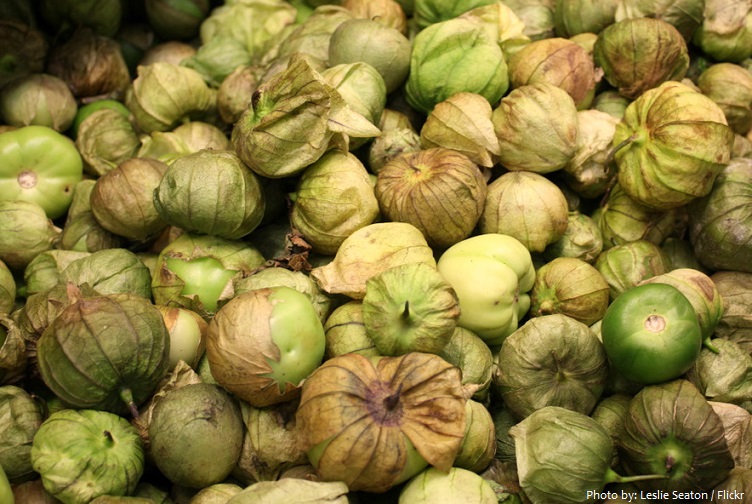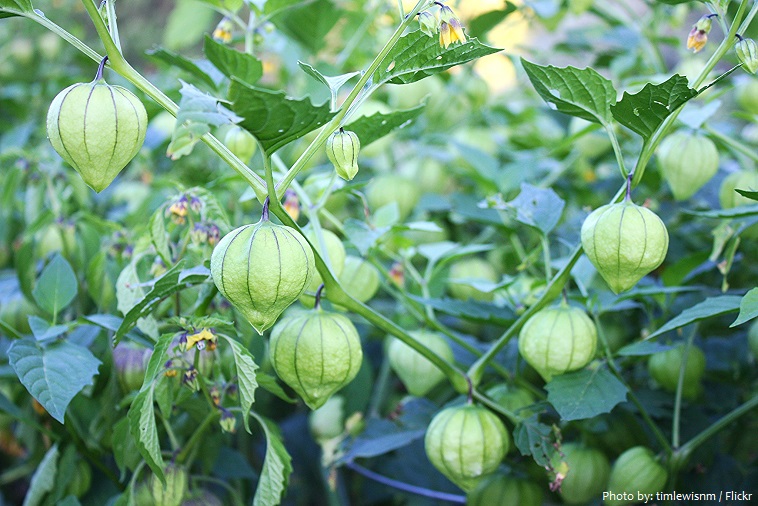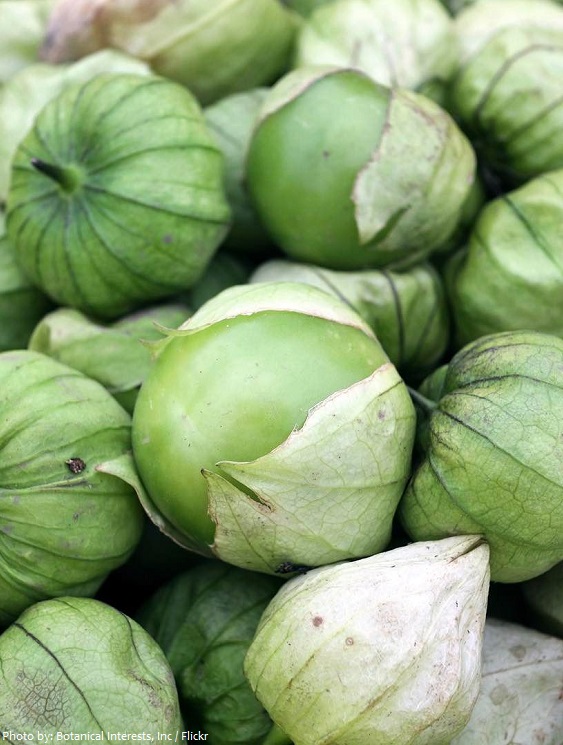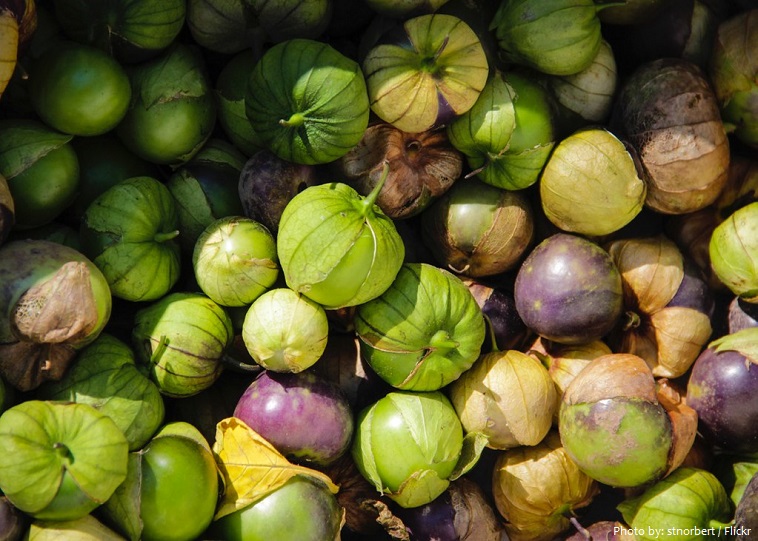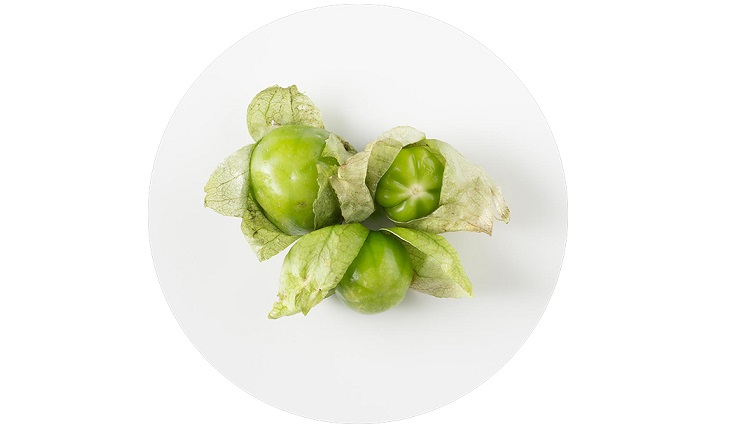The tomatillo also known as the Mexican husk tomato and Mexican ground cherry, is a plant of the nightshade family bearing small, spherical and green or green-purple fruit of the same name.
Tomatillos are native to Mexico where it has been cultivated in the pre-Columbian era.
Evidence of tomatillo eating has been documented as early as 900 BC in the Tehuacán Valley of Mexico. The Aztecs, no strangers to good eating (they are responsible for introducing chocolate, chilies, turkey and lots of other delicious things to the rest of the world), were likely the first to domesticate the little papery husked fruits, even before tomatoes were first cultivated.
Today, tomatillos grow throughout the Western Hemisphere, and are a popular staple food in Mexico, where they are often called “tomato verde” or “green tomatoes” (not to be confused with American “green tomatoes,” which are simply unripe tomatoes).
The name “tomatillo” (which means “little tomato” in Spanish) comes from the Nahuatl word tomatl.
With the Spanish conquests of Mexico and Central America in the 1500s and 1600s, the plant was taken back to Spain, though it was less popular than the related tomato and did not persist in the region.
In the United States, tomatillos have been cultivated since 1863.
Further distribution occurred in the Bahamas, Puerto Rico and Jamaica. By the middle of the 20th century, the plant was further exported to India, Australia, South Africa, and Kenya.
The plant is grown mostly in the Mexican states of Hidalgo and Morelos, and in the highlands of Guatemala where it is known as miltomate.
The plant grow up to 1 meter (3.3 feet) and have few hairs on the stem.
The leaves have acute and irregularly separated dents on the side. The leaves are typically serrated and can either be smooth or pubescent.
Flowers come in several colors including white, light green, bright yellow, and sometimes purple. Flowers may or may not have purple spots toward the center of the corolla. The anthers are typically dark purple to pale blue.
The plants are self-incompatible, meaning they require pollen from a neighbouring plant to produce fruit.
After pollination, the calyx of the flower surrounds the ovary and grows with the developing fruit to protect it, forming a thin papery husk. The fruits are true berries with many tiny seeds and are typically green, yellow, or purple when mature. They range in size and are not generally more than 5 centimeters (2 inches) in diameter.
Tomatillos have a tart, fruity, and slightly herbal flavor.
A staple of Mexican cuisine, they are eaten raw or cooked in a variety of dishes, particularly salsa verde.
Tomatillos can also be dried to enhance the sweetness of the fruit in a way similar to dried cranberries, with a hint of tomato flavor.
There are 32 calories in 100 grams (3.5 ounces) of tomatillo.
Tomatillos are a very good source of dietary fiber, vitamin C, vitamin K, niacin, potassium and manganese. They are also a good source of iron, magnesium, phosphorus and copper.
The health benefits of tomatillo include improve vision health, treating asthma, boosting immune system, treating cold and influenza, treating strep throat, help fight inflammation, lower blood pressure, improving heart health, increase cellular growth and preventing and help fight cancer.
In 2017, scientists reported on their discovery and analysis of a fossil tomatillo found in the Patagonian region of Argentina, dated to 52 million years ago.
Fresh tomatillos with the husk still intact may be stored in the refrigerator for up to two weeks. Tomatillos last a week longer in the refrigerator if the husks are removed and the fruit is placed in
sealed plastic bags.
